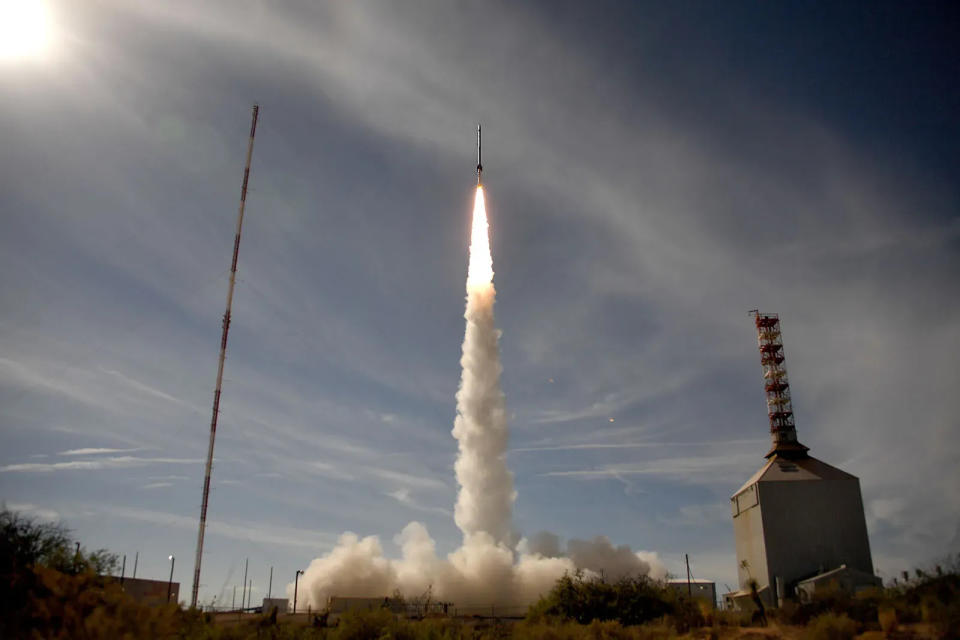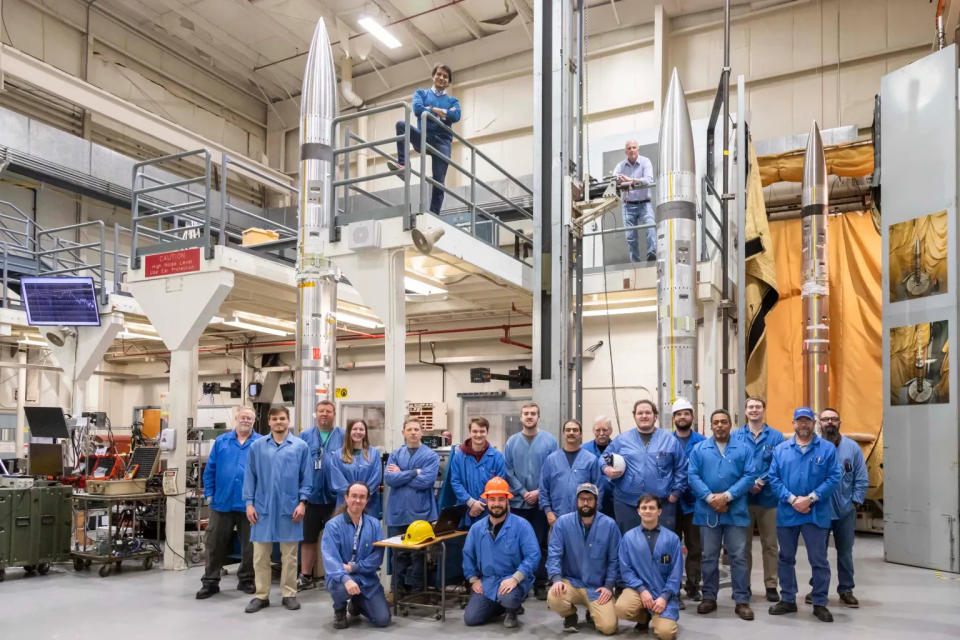NASA is launching 3 sounding rockets into space during the total solar eclipse. Here's why
NASA is preparing to launch three giant rockets toward the sun on the same day that the massive hot ball of light will appear to millions of people in North America be fully eclipsed by the moon.
Most sky-gazers will be eagerly awaiting the moment on Monday, April 8, when the moon completely blocks the sun's disc, ushering in those precious few moments of totality, whereby darkness falls and the sun's outermost layer, the corona, becomes visible.
But keen observers in Virginia – or those just tuning into NASA's online livestream – may also catch those rockets thundering into outer space on their way to the moon's shadow. Fear not: the U.S. space agency isn't launching any sort of attack against the sun, but is rather hoping to gather some valuable scientific data about how solar eclipses alter Earth’s upper atmosphere.
Here's what to know about NASA's rocket experiment, and how to tune in to see it unfold in real time.

Lawsuit over eclipse: New York inmates say a prison lockdown for solar eclipse violates religious freedom
Why is NASA launching rockets during the total solar eclipse?
NASA is using spacecraft called sounding rockets that are equipped with scientific instruments to take measurements and perform experiments during its sub-orbital flight.
The three rockets will launch from NASA’s Wallops Flight Facility in Virginia and will reach an intended altitude of 260 miles, NASA said. That's high enough to study disturbances during a total solar eclipse in the ionosphere, a region of Earth’s atmosphere between 55 to 310 miles above the ground.
The sounding rockets had been previously launched and recovered in October from the White Sands Test Facility in New Mexico during the annular solar eclipse, a similar celestial event that was distinct for the "ring of fire" shape it created in the sky. This time around, NASA said the rockets have been refurbished with new instrumentation.

The ionosphere forms the boundary between Earth's lower atmosphere – where humans live and breathe – and the vacuum of space. Studying its short-term changes during an eclipse is difficult to do with other instrumentation like satellites, which are unlikely to cross into an eclipse's path to make observations and record data, said mission leader Aroh Barjatya, an engineering physicist at Florida's Embry-Riddle Aeronautical University.
Barjatya and his team hope to collect data on how the sun's sudden disappearance during the eclipse creates disturbances that could interfere with communications here on Earth.
“Understanding the ionosphere and developing models to help us predict disturbances is crucial to making sure our increasingly communication-dependent world operates smoothly," Barjatya said in a statement.
How to watch NASA's sounding rocket experiment
The public will have plenty of opportunities to witness the rocket launches themselves on the big day, both in person and online.
The launch window for the mission is 2:40 p.m. to 4:05 p.m. EST, and the rockets are scheduled to launch approximately 45 minutes apart.
Those who find themselves in Virginia during the solar eclipse may consider watching the launches in person from 1 to 4 p.m. EST at the NASA Wallops Flight Facility Visitor Center from the coast of Virginia.
But for most people, the most accessible way to view the rocket launches will be from home.
NASA will host a live stream of the launches on its Wallops YouTube page, with coverage of the mission beginning 10 minutes before the scheduled launch time, according to NASA. The takeoff will also be featured in NASA’s official broadcast of the total solar eclipse.
What else to know about the April 8 eclipse
Hundreds of cities in 13 states are on the path of totality for this year's total solar eclipse, which will pass from southwest to northeast across Mexico, the United States and Canada.
You won't want to miss it, as this is the last such eclipse in North America until 2044.

And don't forget: While a total solar eclipse offers sky-gazers the rare opportunity to witness the display with the naked eye, solar eclipse glasses are still needed until it's safe to do so. Certified solar eclipse glasses are crucial for spectators to avoid the sun's retina-damaging rays.
But when the moon moves completely in front of the sun and blocks its light, you'll know it's safe to remove them for a short period of time.
As you make your eclipse-viewing plans, this guide should help you find some last-minute eclipse glasses, while these interactive maps should help you chart the time and duration for when totality would occur in cities along the path.
Eric Lagatta covers breaking and trending news for USA TODAY. Reach him at [email protected]
This article originally appeared on USA TODAY: NASA will launch rockets to study April 8 solar eclipse: How to watch
